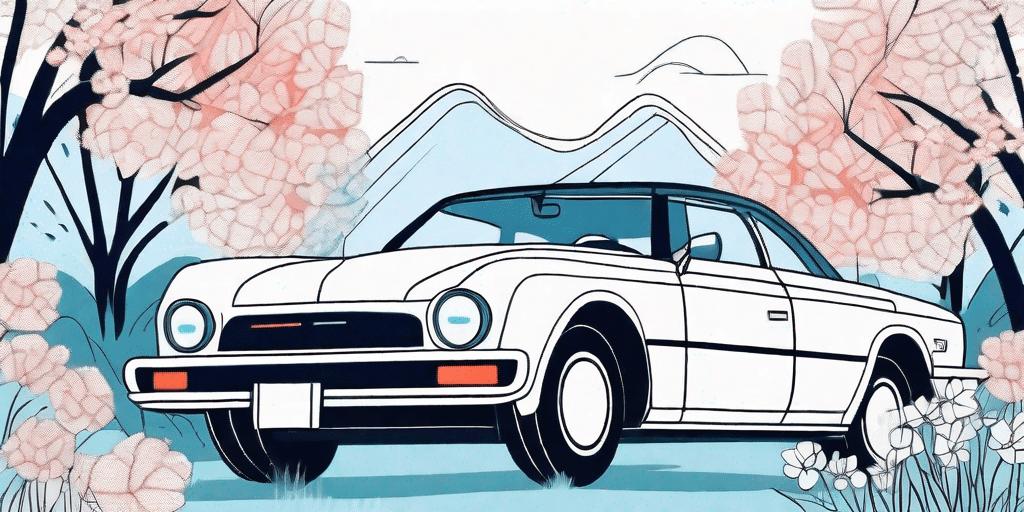Auto glass repair is an essential maintenance task for vehicle owners, especially during the spring season. Understanding the importance of auto glass repair is crucial to ensure the safety and performance of your vehicle. Damaged auto glass can pose significant safety concerns, affecting both the driver and passengers.
Understanding the Importance of Auto Glass Repair
When it comes to vehicle safety, the condition of your auto glass plays a vital role. Damaged windshields, windows, or mirrors can compromise the structural integrity of your vehicle, putting you at risk of accidents. Additionally, a damaged windshield can obstruct your visibility, further increasing the chances of collisions or hazards on the road.
Safety Concerns with Damaged Auto Glass
Cracks, chips, or shattered glass can weaken the structural integrity of your vehicle. In the event of an accident, compromised auto glass may fail to provide adequate support to the roof, leading to a higher risk of injuries. Moreover, damaged auto glass can impact the effectiveness of airbags, increasing the severity of injuries in frontal collisions.
Imagine driving down the highway at high speed, and suddenly a small stone hits your windshield, leaving a small chip. You may think it’s just a minor issue, but that small chip can quickly turn into a crack, compromising the strength of the glass. In the event of a rollover accident, the weakened windshield may not be able to withstand the force, increasing the risk of the roof collapsing and causing severe injuries.
Furthermore, a damaged windshield can hinder your visibility on the road. Even a small crack can distort your view, making it difficult to spot pedestrians, cyclists, or other vehicles. This reduced visibility can lead to accidents, especially in situations where split-second reactions are crucial.
Impact on Vehicle Performance
Auto glass damage can also affect the overall performance of your vehicle. A cracked windshield, for instance, can introduce wind noise and reduce the aerodynamics, negatively impacting fuel efficiency. Additionally, moisture can seep through damaged glass, causing further problems such as interior damage or electrical malfunctions.
Have you ever experienced that annoying whistling sound while driving on the highway? That could be a result of a cracked windshield. The crack disrupts the smooth airflow over the vehicle, creating turbulence and generating noise. Not only is this noise irritating, but it can also be distracting, affecting your focus on the road.
Moreover, a damaged windshield can compromise the seal between the glass and the frame of your vehicle. This allows moisture to seep into the interior, leading to potential damage to the upholstery, electronics, or even the structural components of your car. Electrical malfunctions can occur, affecting various systems such as the power windows, wipers, or even the engine control unit.
It’s important to address auto glass damage promptly to prevent these performance issues from worsening. By repairing or replacing the damaged glass, you can restore the aerodynamics of your vehicle, improve fuel efficiency, and ensure the integrity of your car’s interior.
Identifying the Need for Auto Glass Repair
Recognizing the signs of damaged auto glass is important to address the issue promptly. Ignoring minor chips or cracks can lead to more significant problems in the long run.
Signs of Damaged Auto Glass
Visible cracks or chips in your windshield or windows, especially those obstructing your vision, should never be overlooked. Other signs include scratches, hazy spots, or discolored areas on the glass. Any damage to your auto glass should be inspected immediately to determine the best course of action.
Types of Auto Glass Damage
Auto glass damage can come in various forms, including cracks, chips, bullseye damage, or star-shaped damage. Cracks can range from small hairlines to longer and more significant fractures. Chips, on the other hand, typically result from impact or flying debris, leaving small pieces of glass missing.
The Process of Auto Glass Repair
Repairing damaged auto glass involves a step-by-step process to ensure a seamless and effective outcome.
Initial Assessment and Diagnosis
When you bring your vehicle for auto glass repair, the technician will first assess the extent of the damage. This assessment includes evaluating the size, location, and type of damage, which will determine whether repair or replacement is the best course of action.
Repair vs Replacement: Making the Right Choice
In some cases, minor chips or cracks can be repaired using specialized techniques. However, extensive damage or damage affecting the driver’s line of sight may require a full replacement of the auto glass. The repair technician will provide expert advice on the most appropriate solution based on the assessment.
Costs Associated with Auto Glass Repair
The costs associated with auto glass repair can vary depending on several factors. Understanding these factors can help you anticipate and budget for the necessary repairs.
Factors Influencing Repair Costs
The size, location, and complexity of the damaged area are significant factors that impact repair costs. Generally, minor chips or cracks can be repaired at a lower cost compared to extensive damage that requires replacement. Additionally, the type of vehicle and the availability of specific auto glass parts can influence the overall cost.
Insurance and Auto Glass Repair
Many auto insurance policies cover auto glass repairs or replacements. It is essential to review your policy and understand the coverage before seeking professional help. Some insurance providers offer comprehensive coverage, while others may require additional coverage specifically for auto glass repairs.
Choosing a Reliable Auto Glass Repair Service
When it comes to auto glass repair, choosing a reliable and reputable service provider is crucial. Here are some factors to consider when making your decision.
What to Look for in a Repair Service
First and foremost, make sure the repair service employs certified and experienced technicians. Check for customer reviews and ratings to gauge customer satisfaction. Additionally, the use of high-quality materials, such as OEM (Original Equipment Manufacturer) glass, is essential to ensure a durable and long-lasting repair.
Questions to Ask Your Repair Technician
Before proceeding with any repairs, don’t hesitate to ask the technician questions. Inquire about the warranty period for the repair, the time required for the repair process, and any precautions to take after the repair is completed. Addressing any concerns or queries beforehand ensures a smooth and satisfactory experience.
In conclusion, spring auto glass repair is a vital task to maintain the safety and performance of your vehicle. Understanding the importance of addressing auto glass damage promptly, identifying signs of damage, and selecting a reliable repair service are essential steps for a secure and stress-free driving experience. Remember, a small chip or crack today can turn into a much bigger problem tomorrow, so don’t delay in getting your auto glass repaired. Stay safe, stay informed, and enjoy the beauty of spring while on the road.



